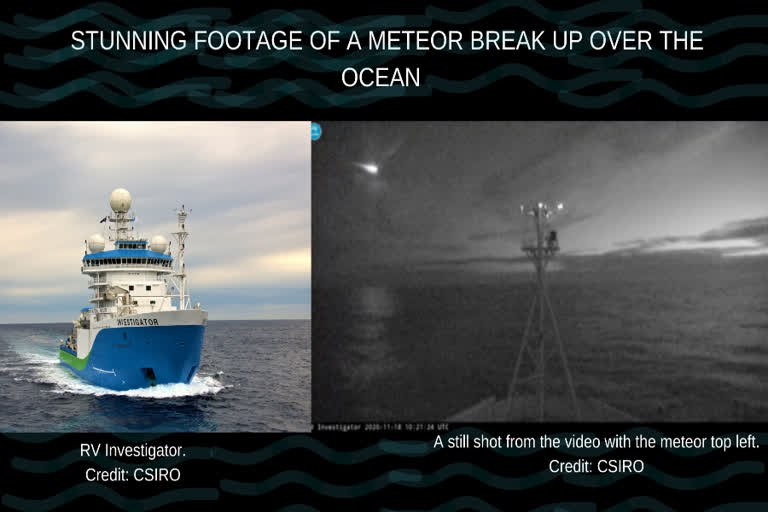Australia: The meteor, which was bright green, had been captured perfectly by the ship’s live stream camera, which beams live vision from the ship 24/7.
Meteor captured from CSIRO Research Vessel (RV) Investi…r_Video © CSIRO.mkv At the time the vision was captured, RV Investigator was in the Tasman Sea about 100km south off the Tasmanian coast. CSIRO Voyage Manager onboard RV Investigator John Hooper said it was a stroke of luck to capture this footage.
e position of the Investigator at the time the meteor was filmed.. Credit: CSIRO “What we saw on reviewing the livestream footage astounded us, the size and brightness of the meteor was incredible,” Mr Hooper said. “The meteor crosses the sky directly in front of the ship and then breaks up – it was amazing to watch the footage and we were very fortunate that we captured it all on the ship livestream.”
Glen Nagle from CSIRO Astronomy and Space Science said “Over 100 tonnes of natural space debris enters Earth’s atmosphere every day,” Mr. Nagle said. “When a meteor enters the Earth’s atmosphere at high-speed, it is the friction of rock with the atmosphere that makes them burn, as their kinetic energy is converted to other forms like heat, light, and sound.
- Many meteors were once asteroids, traveling through space on their own trajectory.
- This changes as they pass close to Earth, where they can be affected by its gravitational pull.
- As they enter our atmosphere, they become meteors – and their entry can be visually spectacular.
RV Investigator is part of the Marine National Facility, a dedicated marine research capability funded by the Australian Government and owned and operated by CSIRO on behalf of the nation.
Also Read: CSIRO: PARKES RADIO TELESCOPE GIVEN INDIGENOUS NAME
